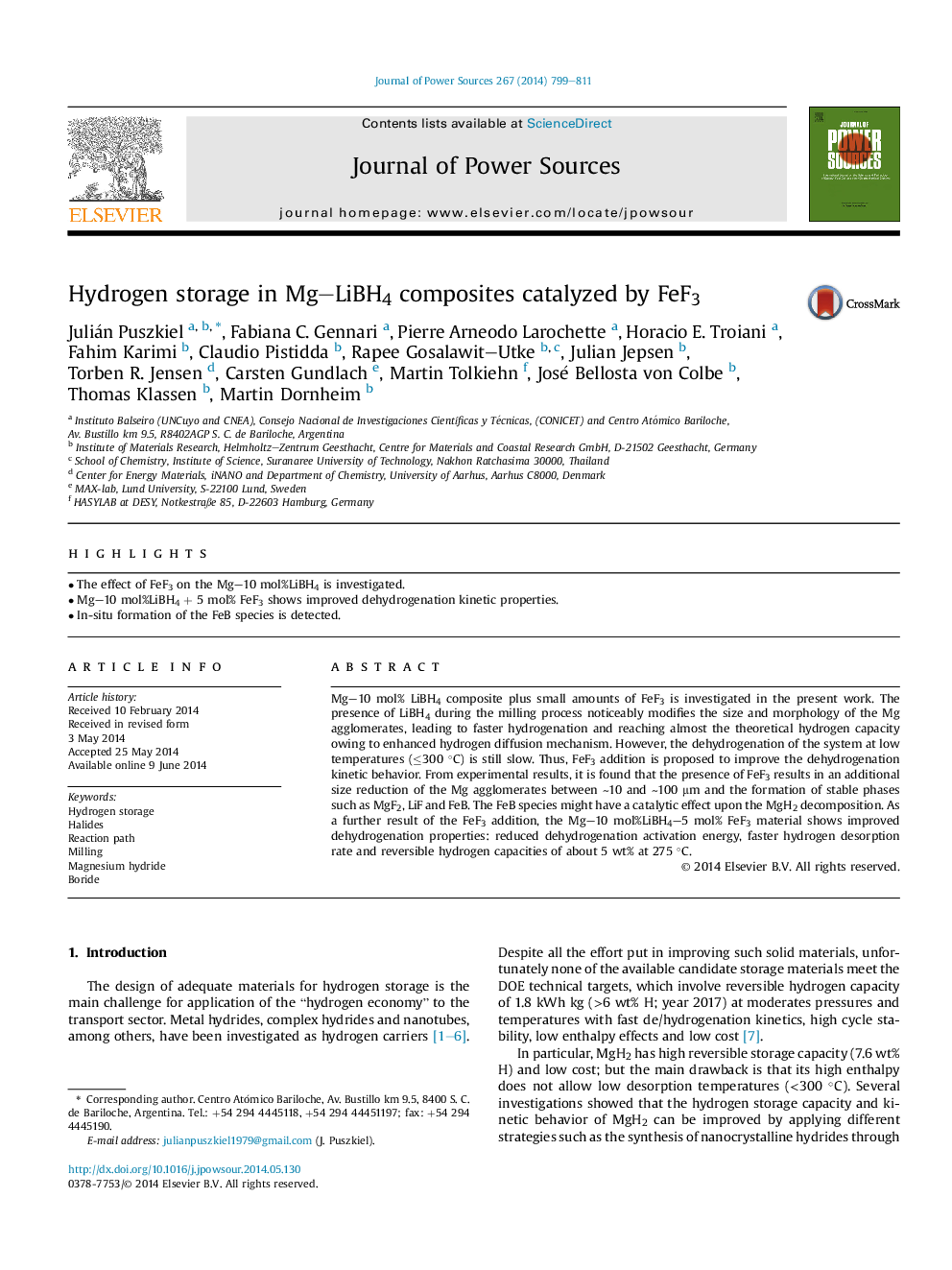| Article ID | Journal | Published Year | Pages | File Type |
|---|---|---|---|---|
| 1286610 | Journal of Power Sources | 2014 | 13 Pages |
•The effect of FeF3 on the Mg–10 mol%LiBH4 is investigated.•Mg–10 mol%LiBH4 + 5 mol% FeF3 shows improved dehydrogenation kinetic properties.•In-situ formation of the FeB species is detected.
Mg–10 mol% LiBH4 composite plus small amounts of FeF3 is investigated in the present work. The presence of LiBH4 during the milling process noticeably modifies the size and morphology of the Mg agglomerates, leading to faster hydrogenation and reaching almost the theoretical hydrogen capacity owing to enhanced hydrogen diffusion mechanism. However, the dehydrogenation of the system at low temperatures (≤300 °C) is still slow. Thus, FeF3 addition is proposed to improve the dehydrogenation kinetic behavior. From experimental results, it is found that the presence of FeF3 results in an additional size reduction of the Mg agglomerates between ∼10 and ∼100 μm and the formation of stable phases such as MgF2, LiF and FeB. The FeB species might have a catalytic effect upon the MgH2 decomposition. As a further result of the FeF3 addition, the Mg–10 mol%LiBH4–5 mol% FeF3 material shows improved dehydrogenation properties: reduced dehydrogenation activation energy, faster hydrogen desorption rate and reversible hydrogen capacities of about 5 wt% at 275 °C.
